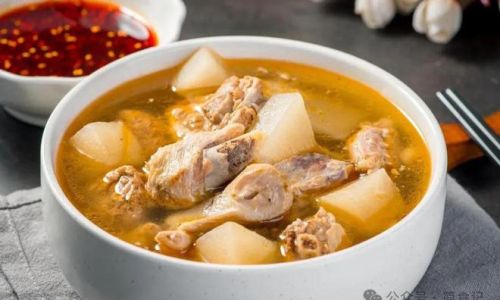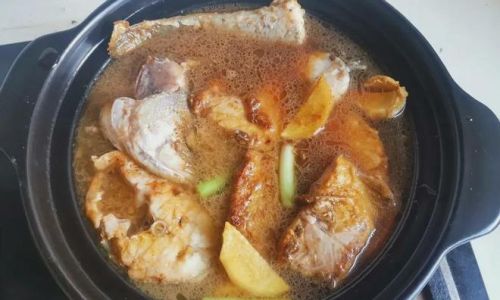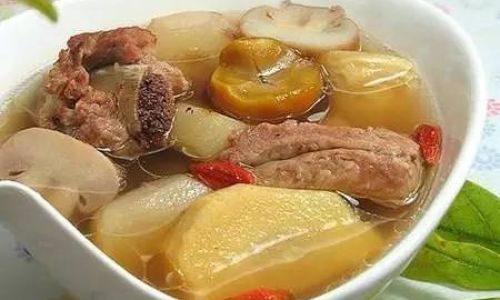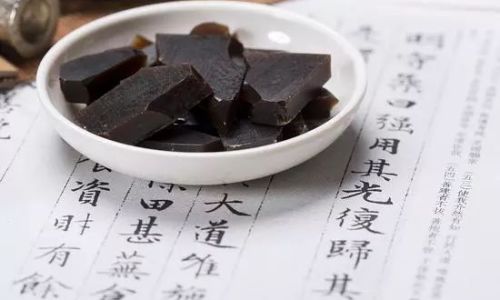Introduction
In the realm of traditional Chinese cuisine, few dishes balance flavor, nutrition, and cultural significance as elegantly as Morinda root-stewed Muscovy duck. This hearty stew, rooted in the principles of Chinese herbal medicine, combines the earthy richness of Morinda root (巴戟天) with the tender, gamey flavor of Muscovy duck. Often hailed as a tonic for enhancing vitality and promoting well-being, this dish is a staple in households across Asia, particularly during colder months when warmth and nourishment are most cherished. Despite its reputation as a gourmet delicacy, preparing this stew requires minimal culinary expertise. With a handful of fresh ingredients, a few simple steps, and patience, anyone can recreate this timeless recipe. This article will guide you through the process, from selecting the finest components to achieving the perfect balance of flavors and textures.
Understanding the Key Ingredients
-
Morinda Root (Morinda officinalis):
Often referred to as Ba Ji Tian in Chinese, Morinda root is a staple in traditional Chinese medicine (TCM). Revered for its warming properties, it is believed to invigorate the kidneys, strengthen bones, and alleviate fatigue. The root’s bitter-sweet taste and fibrous texture make it an ideal companion for slow-cooked dishes, where it imparts a subtle earthiness while absorbing the flavors of the broth. -
Muscovy Duck:
Unlike conventional ducks, Muscovy ducks are prized for their lean, dark meat, which boasts a rich, beef-like flavor with minimal fat. Their robust texture holds up well in stews, making them the perfect canvas for absorbing the aromatic essence of herbs and spices. When selecting a duck, opt for fresh or frozen whole birds, ensuring the skin is intact to lock in moisture during cooking.
-
Supporting Ingredients:
- Goji Berries (Wolfberries): These vibrant red berries add a touch of sweetness and visual appeal while contributing antioxidants.
- Dried Red Dates: Their natural caramel-like flavor deepens the stew’s complexity.
- Ginger and Garlic: Essential aromatics that neutralize the duck’s gaminess.
- Shaoxing Wine: A rice wine that imparts a mellow acidity and fragrant undertones.
- Rock Sugar: A traditional sweetener that balances bitterness without overpowering the dish.
Step-by-Step Preparation
Preparing the Duck:
- Begin by thoroughly rinsing the Muscovy duck under cold water. Pat it dry with paper towels to remove excess moisture.
- Using a sharp knife, trim any visible fat pockets near the cavity or neck. While some fat enhances flavor, excessive amounts can make the stew greasy.
- Cut the duck into six to eight pieces (legs, thighs, breasts, and wings) for even cooking. For larger gatherings, retain the carcass for added flavor, but remove it before serving.
Blanching the Duck:
- Fill a large pot with enough water to submerge the duck pieces. Bring it to a rolling boil.
- Add the duck pieces and two slices of fresh ginger. Blanch for three to four minutes to eliminate impurities and reduce gaminess.
- Drain the duck and rinse it under cold water to halt cooking. This step ensures a clearer, cleaner-tasting broth.
Sautéing Aromatics:

- In a heavy-bottomed Dutch oven or clay pot, heat two tablespoons of cooking oil over medium heat.
- Add minced garlic (four cloves) and finely chopped ginger (two tablespoons). Sauté until fragrant but not browned.
- Introduce the blanched duck pieces, searing them until lightly golden. This step seals in juices and enhances the meat’s depth of flavor.
Assembling the Stew:
- Return the duck to the pot. Add eight cups of cold water or low-sodium chicken broth.
- Toss in 50 grams of Morinda root (rinsed and lightly crushed to release flavors), 15 goji berries, 10 dried red dates (pitted), and two tablespoons of Shaoxing wine.
- Bring the mixture to a gentle simmer, skimming off any foam that rises to the surface.
Slow-Cooking to Perfection:
- Reduce the heat to low, cover the pot, and let the stew simmer for two to two and a half hours. Stir occasionally to prevent sticking.
- After 90 minutes, add one tablespoon of rock sugar and a pinch of salt to taste. Adjust seasoning gradually, as the broth will concentrate as it reduces.
- The duck is ready when the meat easily pulls away from the bone, and the Morinda root has softened but retains a slight chew.
Final Touches:
- For a lustrous finish, drizzle a teaspoon of sesame oil over the stew just before serving.
- Garnish with chopped cilantro or thinly sliced scallions for a fresh contrast.
Tips for Success
- Morinda Root Quality: Purchase roots that are firm, unblemished, and aromatic. Avoid those with a musty odor, as they may be stale.
- Fat Management: If the stew appears greasy, use a spoon to skim off excess fat during the last 30 minutes of cooking.
- Pressure Cooker Adaptation: For a quicker version, use a pressure cooker. After sautéing, cook on high pressure for 45 minutes, then release naturally.
- Vegetarian Adaptation: Substitute duck with oyster mushrooms or tofu, and use vegetable broth. Add dried shiitake mushrooms for umami.
Health Benefits and Cultural Context
In TCM, Morinda root-stewed Muscovy duck is prescribed for those recovering from illness, experiencing joint pain, or seeking immune support. The dish’s warming nature makes it a winter favorite, believed to boost “yang” energy and improve circulation. Beyond its medicinal reputation, the stew symbolizes familial care—a labor of love simmered slowly to nourish both body and spirit.

Serving Suggestions
- Pair with steamed jasmine rice or glutinous rice to soak up the flavorful broth.
- Serve alongside stir-fried bok choy or garlic-sautéed Chinese broccoli for a balanced meal.
- For a festive touch, accompany with pickled vegetables or a side of chili oil for those who crave heat.
Conclusion
Morinda root-stewed Muscovy duck is more than a dish—it’s a testament to the harmony between cuisine and wellness. By adhering to simple techniques and respecting the integrity of each ingredient, even novice cooks can produce a stew that delights the senses and nourishes the soul. Whether enjoyed on a chilly evening or shared at a family gathering, this recipe invites you to savor the timeless wisdom of traditional Chinese cooking. So, gather your ingredients, embrace the slow rhythm of simmering, and let the aromatic steam of this beloved stew fill your kitchen with warmth and comfort.





0 comments